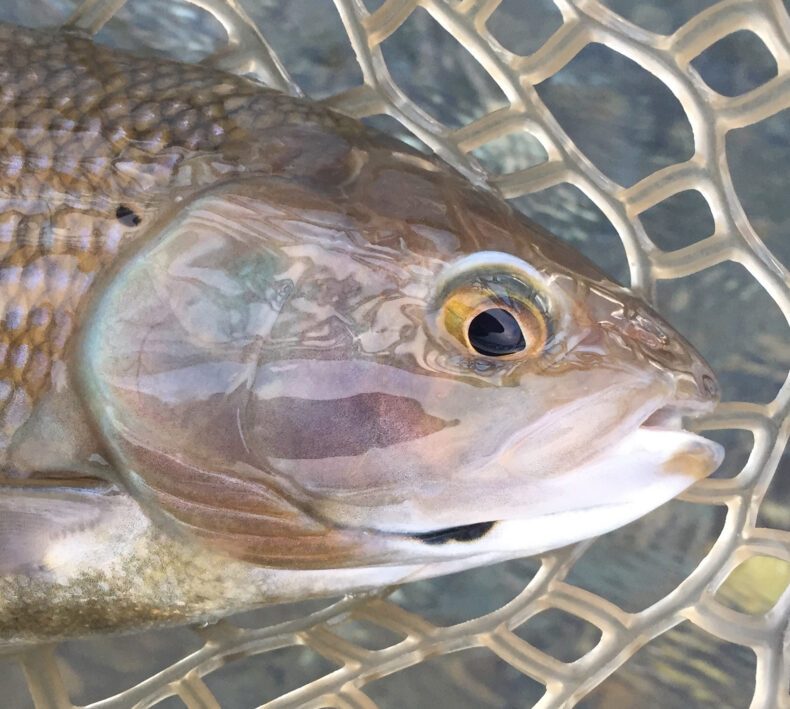
Earlier this week, I found myself scrolling through photos on my computer, reminiscing semi-fondly on the year that was, when I stopped short at a series of pictures from a reporting trip I took this summer to Nome, Alaska (story still TK, alas). Like many of my reporting trips, this one also doubled as an angling excursion, especially since the Arctic daylight persisted until well after midnight, meaning that even long days of journalisming could end with me standing waist-deep in the Nome River. The river turned to be full of spectacular and obliging Arctic grayling — scales with the glittery sheen of oil on water, dorsal fins proud as flags — and I felt profoundly fortunate to stand in the presence of such gorgeous creatures in their native habitat. The experience also reminded me of catching grayling in the high lakes of Idaho, which I wrote about for LWON back in 2020. Those starving alpine fish were guppies compared to the robust torpedos that cruised along the Nome River, but I still recall them fondly — the sheer surprise of finding them up there, the delicacy of their sleek little bodies, their avidity. Below, two more pictures from my Arctic adventure this summer, followed by a reprise of that 2020 essay.
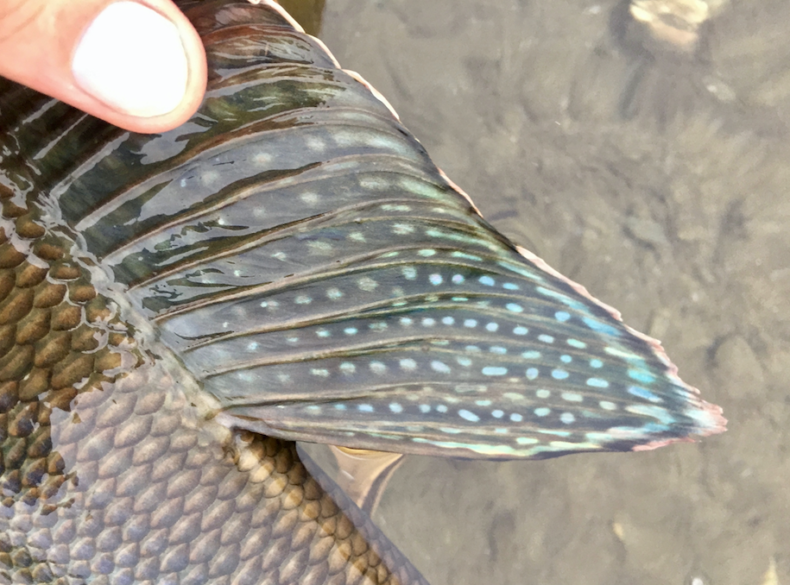
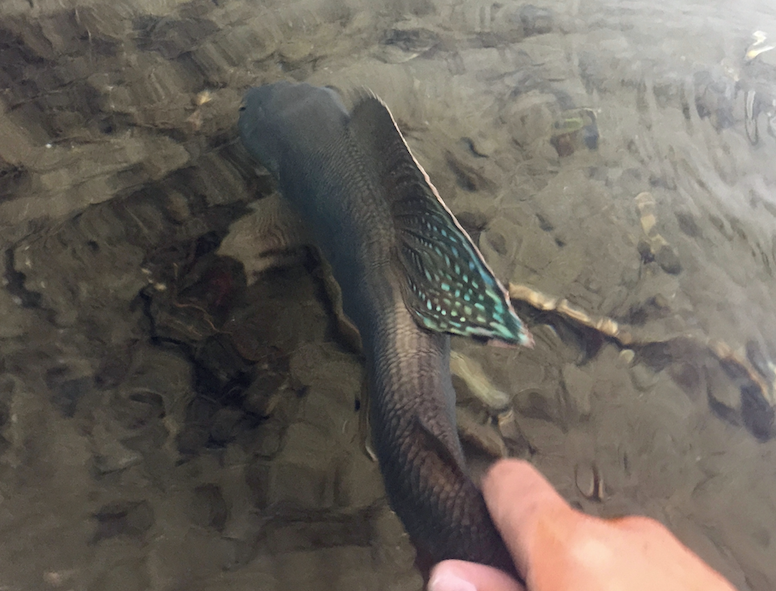
Last weekend Elise and I spent three days backpacking in the vicinity of Pyramid Pass, a high notch in the stony spine of the Idaho Selkirks. With a couple of friends in tow (don’t worry: absolutely no hugging!), we crested the pass and descended to a teacup lake nested in a bowl of granite and stunted firs. Like many tiny alpine lakes, this one looked low-nutrient and barren, a sapphire more beautiful than alive. Around sunset, though, fish began to dimple the surface, sending out concentric rings as they rose to emerging midges. I strung my rod and tossed out a fly.
The fish that hit my ant was small — palm-length, tops — and came to hand with a few gentle tugs. It was no trout. Its scales, notably large for its diminutive body, gleamed chrome, and a fine smattering of black spots freckled its gill plates. In the fading light, I mistook it for a mountain whitefish, a common bottom-feeder. I slid it back into the lake, felt its tail kick against my hand like a heartbeat, and cast again.
Not until the third fish did I recognize my misdiagnosis. As I disengaged the hook from the neat O of its mouth, its dorsal fin, which had been tucked snug against its back, rose and billowed, like a mainsail unfurling in a stiff breeze. With a ginger forefinger, I extended the dorsal to full, spectacular mast. A sunburst of spots — lilac, burgundy, cinnamon — decorated the proud appendage. This was no whitefish, I realized with sudden wonder. This was an Arctic grayling.
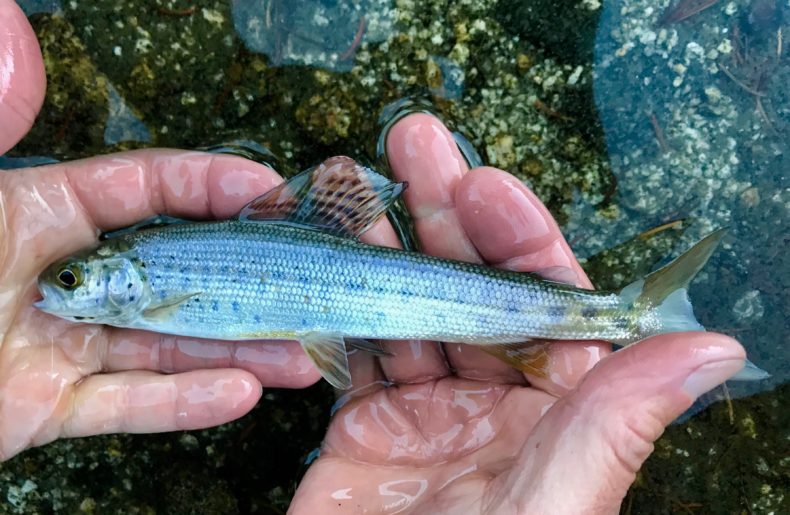
Arctic grayling are, for many a Lower 48 angler, a bucket-list fish — lovely, elusive, declining. As their name suggests, they’re a resident of the far north, relegated to Canada and Alaska by their own thermal intolerance and the vagaries of biogeography. The only river-dwelling grayling left below the Canadian border live in the upper Missouri River basin, in Montana, where they’re imperiled by climate change; despite their vulnerability, the U.S. Fish & Wildlife Service, in its finite wisdom, recently denied them protection under the Endangered Species Act. They’ve also been stocked in a handful of high lakes scattered around the Northern Rockies, to which anglers flock like religious pilgrims. I had apparently stumbled upon one of those lakes and the Arctic jewels within it. It felt a bit like crossing paths with a caribou.
Though I’d never before held one, grayling happen to be the subject of perhaps my favorite piece of fishy writing, David Quammen’s essay “Jeremy Bentham, the Pietà, and a Precious Few Grayling,” which is an ode to, well, their extravagant uselessness. Grayling, Quammen wrote (and I can now confirm), aren’t much of an angling challenge — they’re indiscriminate diners as likely to take “a hook decorated with feathers and floss” as they are a mayfly, and uninspired fighters who leap with all the vim and grace of a “Victorian matron.” They are fragile, timorous members of the aquatic community, readily bullied and replaced by rainbows and other non-native trout. They appear to serve, in other words, no indispensable function, either ecologically or recreationally — a quality they share, added Quammen, with the auk, the zebra swallowtail, Angkor Wat, Michelangelo’s Pietà, even art itself.
What do you do, then, with grayling? Well, you simply spend time with them, as you would spend time in a gallery or a garden. “You catch grayling to visit them: to hold one carefully in the water, hook freed, dorsal flaring, and then watch as it dashes away,” wrote Quammen. They are among nature’s millions of small, subtle gifts, as spiritually nourishing as a hummingbird.
That verb — visit — feels, upon re-reading, so right to me. We visit museums; in science fiction, extraterrestrials visit us. Those dual resonances are, together, an apt articulation of why I fish: because I find fish more bewitching than any human-generated artwork, because holding them is the closest I can come to communing with an alien lifeform. Unlike other enchanting non-humans — western tanagers, spotted salamanders, moose — they never flit, crawl, or meander through our world. Instead, we must drag them, perhaps cruelly, into ours. Fishing is the crude, greedy portal through which we visit these useless little gems, treasures of nature otherwise inaccessible to us.
Fish also seem to have a curious way of conjuring magic — and certainly my grayling did. At the moment I’m reading Eowyn Ivey’s epistolary novel To the Bright Edge of the World, which I lugged with me into the Selkirks. The book, in brief, follows a skeletal Alaskan expedition, led by a rather staid U.S. Army colonel, as it slogs up the fictional Wolverine River in the late 1800s. The party spends most of the trip in the company of Native people, who, despite their misgivings about the intent of the invading “Red Beards,” offer the colonel and his men shelter, food, and guidance — and also unsettle their hard-headed, western worldviews.
Without giving much away, Ivey’s rendering of the Alaskan interior is surreal and wondrous; the Wolverine River is a place where the line that divides the human world from the non-human is thin to the point of translucence. Women transform into geese and men into ravens; the souls of the dead take the form of wolverines. A baby is born from a spruce tree, the umbilicus “rough & coarse & coated in dirt.” It’s an eerie, unnerving book, the kind that haunts you when you find yourself roaming a mountainside in the twilight, gathering firewood to stave off the encroaching dark.
Anyway. Grayling. The next morning, I woke to find the surface again ruffled by rising fish. The grayling, I found after a few productive casts, were even lovelier in the daytime, the early sun bringing out a pale turquoise in the iridescent dorsal. After a time the bite quieted, and I settled down on a slab of granite with To the Bright Edge of the World. I cracked the book, read a couple pages, watched the far mountainside change colors. I turned the page again, and froze at the accompanying illustration:
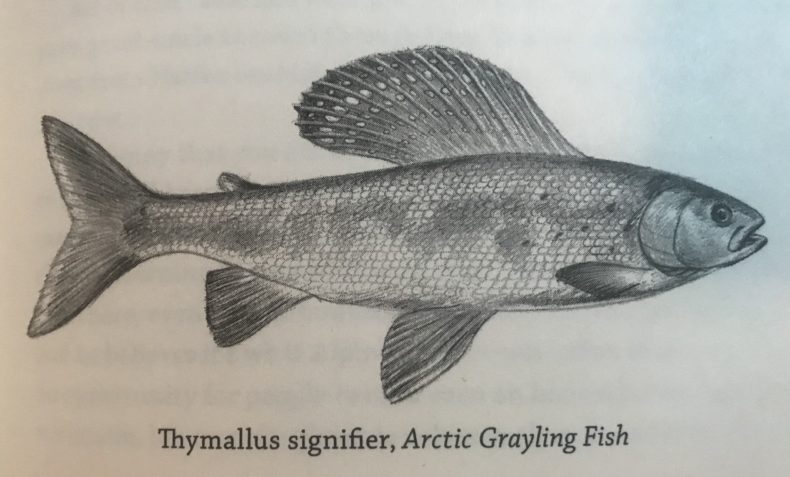
There it was. The grayling. My grayling. I felt a delicate tingle, as though at the approach of an electrical storm. It was as if the fish had summoned itself in the book, or the book had summoned the fish.
At home, I looked up state records, and learned the Idaho Department of Fish & Game had indeed stocked grayling in the lake as recently as 2018 — the prosaic, predictable explanation for their presence. Still, I prefer to believe that Thymallus arcticus, this odd and radiant Arctic artifact, had been generated by some incomprehensible alchemy of nature and literature. It felt like a small but significant gift from the universe, a knowing wink from the gods of piscine kismet. Had I visited grayling, or had they visited me?
Oh! This sounds so wondrous, as does To the Bright Edge of the World. Just borrowed it from the library. Thank you for this.